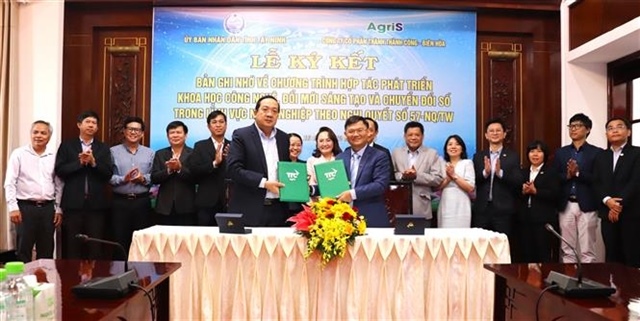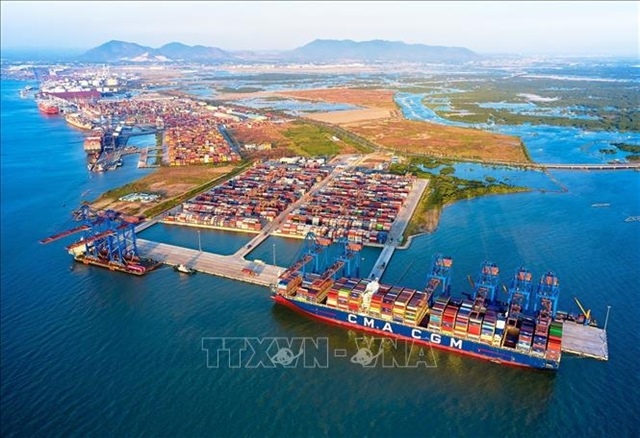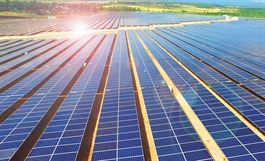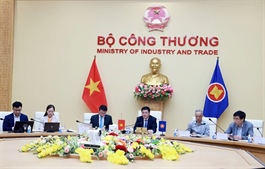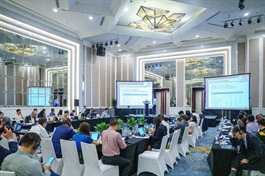Certainty is paramount for energy project success
Certainty is paramount for energy project success
While Vietnam’s electricity demand is forecast to rise over 10 per cent annually, the growth of new energy sources and renewables ventures has slowed down. Stuart Livesey, member of the Offshore Wind Power Task Force under the Vietnam Energy Partnership Group, spoke with VIR’s Phuong Thu about solutions to encourage new energy sources.
Offshore wind (OSW) is considered one of Vietnam’s most promising energy sources. What opportunities and challenges do you see for developing this sector?

Stuart Livesey, member of the Offshore Wind Power Task Force under the Vietnam Energy Partnership Group |
Vietnam has many advantages for OSW development. The wind speed in the south-central region is very good, especially in Binh Thuan and Ninh Thuan provinces, and speeds are much higher than many other places in Asia. Good wind intensity for year-round exploitation is a premise for developing the industry.
In addition, much of the waters along Vietnam’s coastline are relatively shallow, and wind zones are relatively close to shore, helping structures to be installed directly on/in the seabed at reasonable costs, therefore not as complicated and expensive as floating structures.
With a focus on available and efficient grid infrastructure, and a limited level of port infrastructure upgrades, Vietnam has a good basis for the industry, enabling a transition from the offshore oil and gas industry, and also the onshore construction industry.
To support development and construction, there is already a very advanced supply chain for the industry, which is well-positioned to maximise the benefits of this energy form. Many companies in Vietnam have experience supplying OSW equipment to Taiwan, South Korea, Europe, and the United States.
The challenge for Vietnam is that over the past five years, the process enabling decision-making and project implementation has almost ground to a halt, with regulatory delays, high global demand for supply chain resources, and the lack of progress with any early-stage development. This has detracted many developers who are going to markets that are seen as more stable and risks are lower.
Now things are starting to get back on track with the Electricity Law passed in November 2024, and all the guiding decrees being drafted and implemented alongside the new law since February this year.
The government has also amended regulations on assignment of certain sea areas to organisations and individuals for exploitation and use of marine resources, effective May 2025. Thus, developers can apply for seabed allocation for offshore surveys.
With these new positive developments, if Vietnam allows seabed surveys to commence and other related activities in 2025, the country still has full potential to become a renewable energy hub and meet carbon commitments by 2050.
With the rapid advancement of power-to-X (PtX) and hydrogen technologies, how do you assess their potential applications in Vietnam?
PtX and hydrogen technologies are rapidly advancing, and Vietnam has strong potential to become a key player in this sector, given its abundant renewable energy resources.
These technologies can function independently to wind, or also in association with the industry, and offer an often-valuable solution to avoid energy losses, or meet the demand of supplying energy in another form, such as storage to batteries, or changing electrons to hydrogen atoms as ammonia or hydrogen gas.
Many industries will demand other forms of energy and hence there is an opportunity, but there are also disadvantages based on the current levels of technology of changing electrons into atoms, and also utilising storage – very often maintaining a cost-effective solution for such projects can be very challenging.
However, several challenges need to be addressed for Vietnam to become a hydrogen production hub. These include regulatory and policy framework, infrastructure development, market demand and offtake agreements, and cost competitiveness.
Vietnam currently lacks a clear regulatory framework for hydrogen production, transportation, and export. Policies and incentives must be established to attract investment and ensure long-term market stability. Producing green hydrogen requires large-scale electrolyses, storage facilities, and transportation networks, which are still in the early stages of planning in Vietnam.
PtX and green hydrogen may be still expensive for Vietnam now, but the cost could be reduced soon, given quick technological advancement. If Vietnam can catch the trend and ensure proper preparation, including training high-skilled personnel, financial resources, and cooperation with capable partners, I believe Vietnam has the potential to become a hub for PtX and green hydrogen in the Asia-Pacific region.
My opinion is that the focus in the short-term, for the next 5-10 years whilst allowing technologies to be refined, costs to drop, and demand to increase, would be to focus on more mature renewable energy generation such as solar, onshore and nearshore wind, and high-base capacity OSW, which are currently more suited to the Vietnamese market.
From a policy, investment, and infrastructure perspective, what barriers need to be overcome to accelerate progress?
Renewable energy and new energy sources have opportunities to account for a more significant share of Vietnam’s power generation. While some important regulations to encourage the development of renewable energy have been passed, these policies have not yet provided a sense of security for foreign visitors to enter Vietnam’s market, or indeed to allow local companies to instigate large-scale investments that are needed to build or supply for these projects.
I would recommend clear visibility on how projects can be developed, constructed, and operated, with increased certainty over timelines, decision-making processes, stability, offtake costs, and associated grid and port infrastructure availability. For investors, transparent policies and clear procedures and timely approvals are critical to ensure projects can be delivered on time and in budget, ensuring the end consumer gets optimum value for money from their electricity costs, particularly linking up surveys with an ability to capitalise on this when seeking to bid for a project.
Additionally, there are still unclear factors that make foreign-led groups hesitate to invest. In other sectors such as industry and manufacturing, investors are well aware of the regulations and know how much profit their investments will bring, while the investors in the energy sector are not.
Vietnam needs to bring certainty to the domestic energy market, convince foreign-invested enterprises that this is a safe, transparent, and tightly controlled investment environment. This message needs to be communicated consistently from the highest levels of government, and decisions made in a timely manner.
Many other countries have similar goals to Vietnam in achieving net-zero emissions by 2050, and the goal of developing renewable energy by 2030. This means developers in Vietnam will have to compete with these markets to secure supplies for green energy, and indeed compete for the attention of the developers, and the supply chain they utilise.
Vietnam also has to upgrade its power transmission system, port systems, logistics, and local supply chains to serve the future development of the energy sector.
To engage investment in renewable energy and emerging sources like hydrogen, Vietnam must take concrete steps to create a stable and competitive market. It must strengthen the policy and regulatory framework, ensure stable policies and transparent regulations to build investor confidence, provide increased certainty on offtake, streamline project approval processes, develop a national strategy on emerging sources like hydrogen, and focus time and energy when demand and cost is at a level to satisfy the input needed.
- 10:58 11/04/2025




